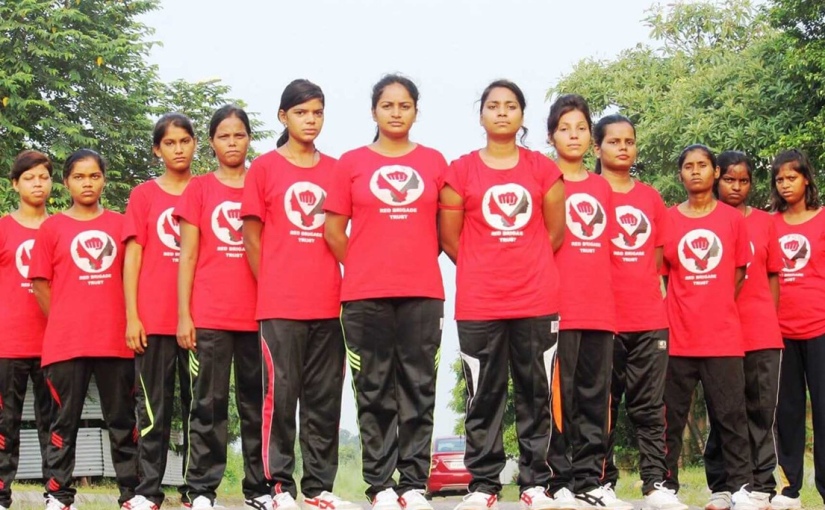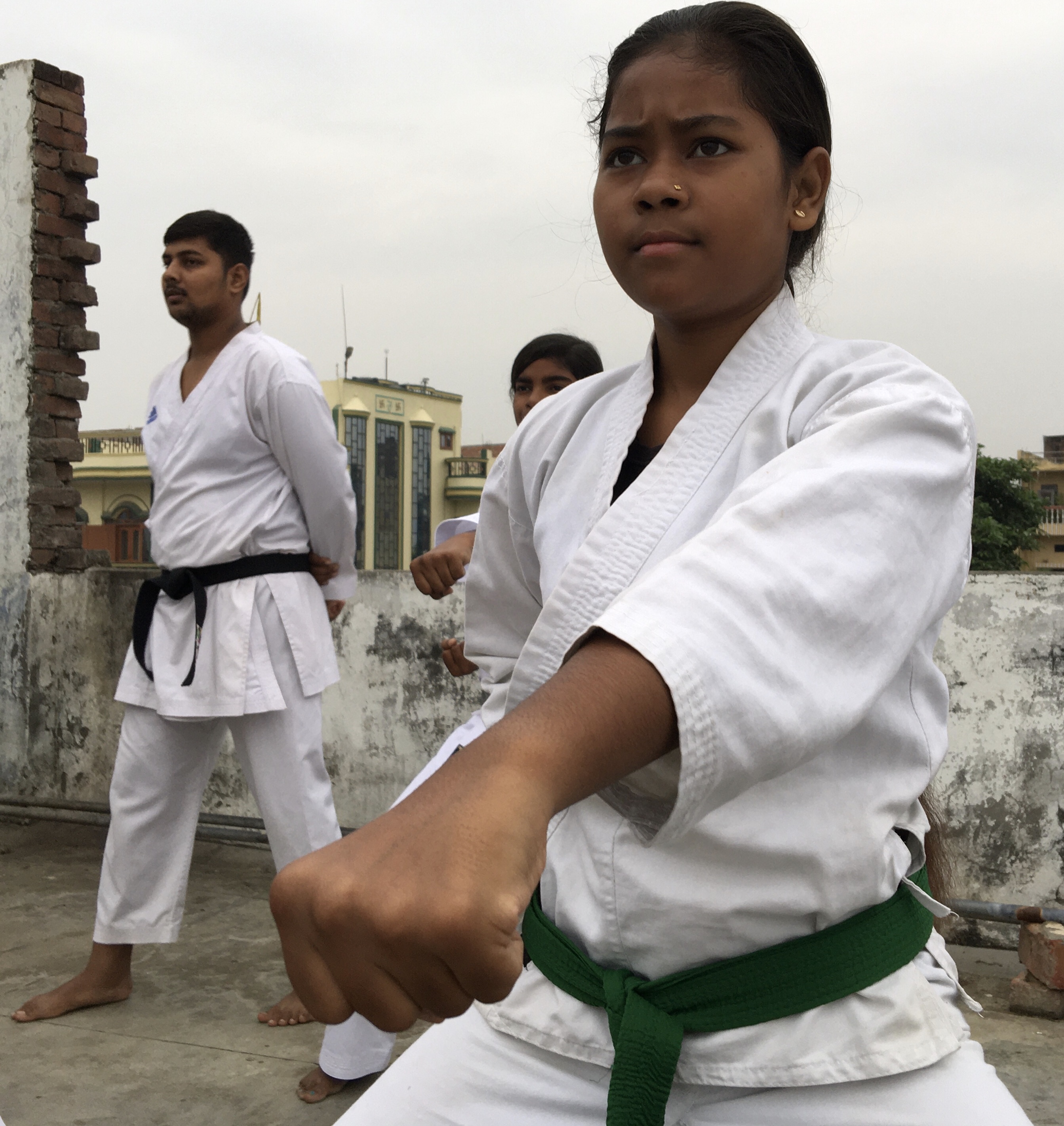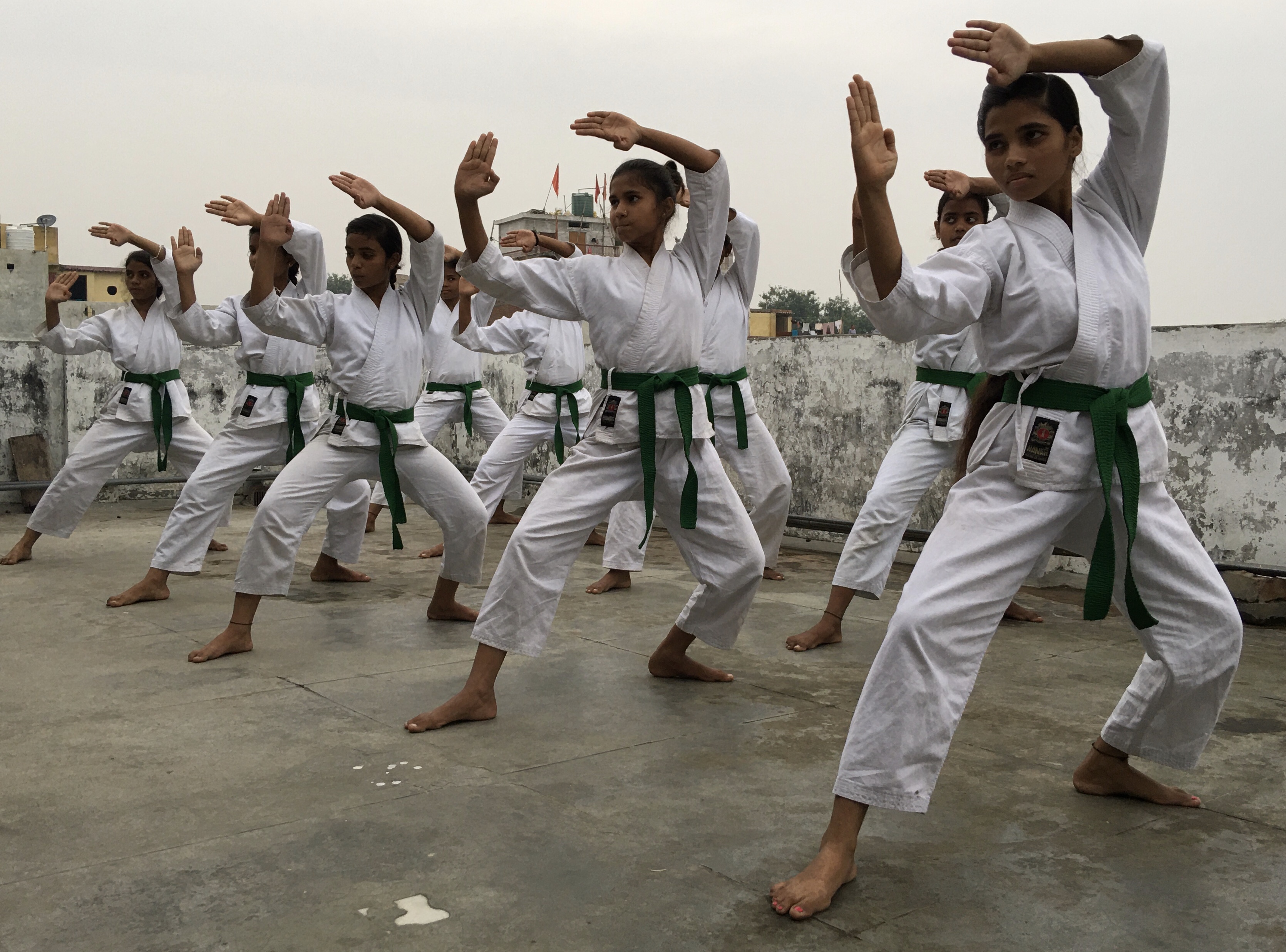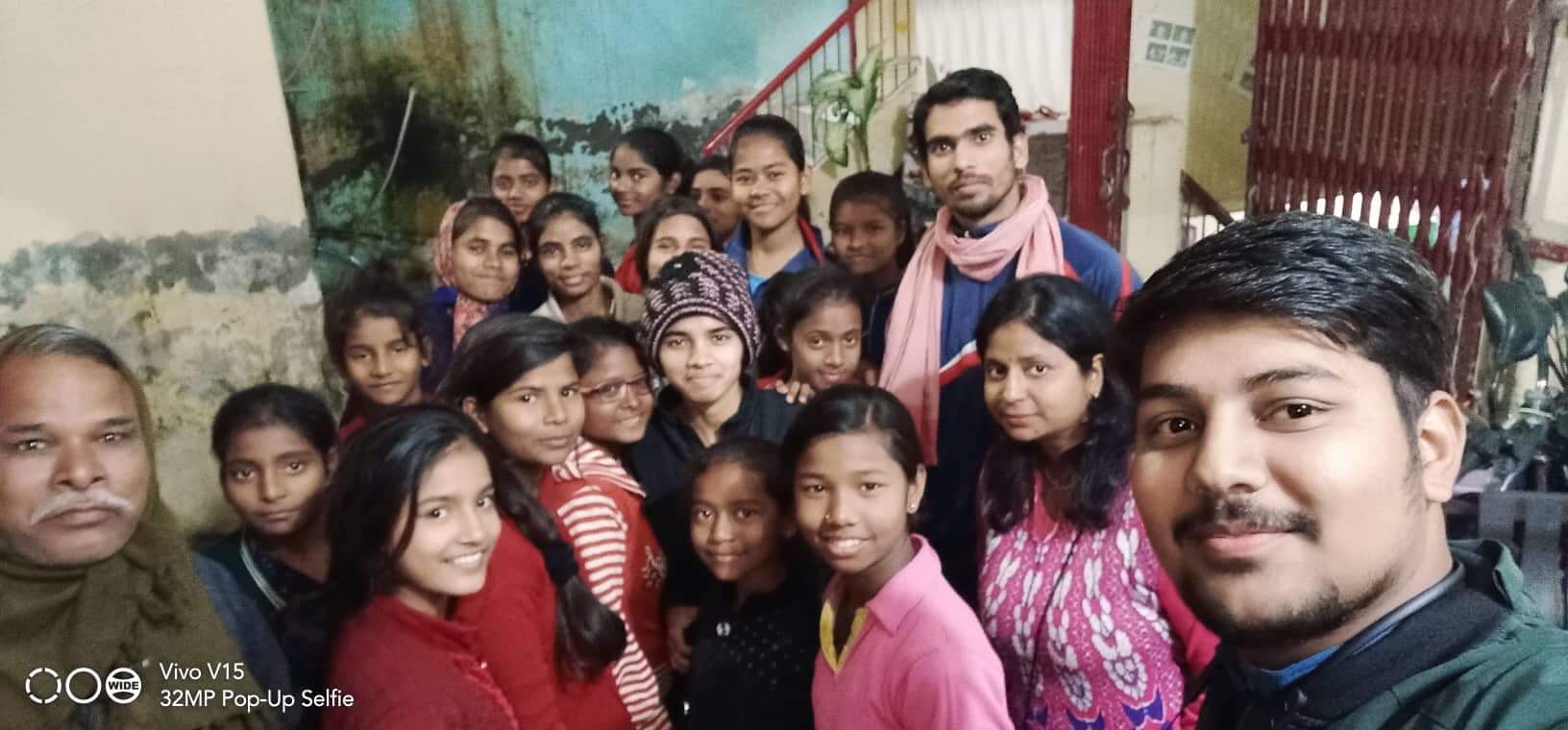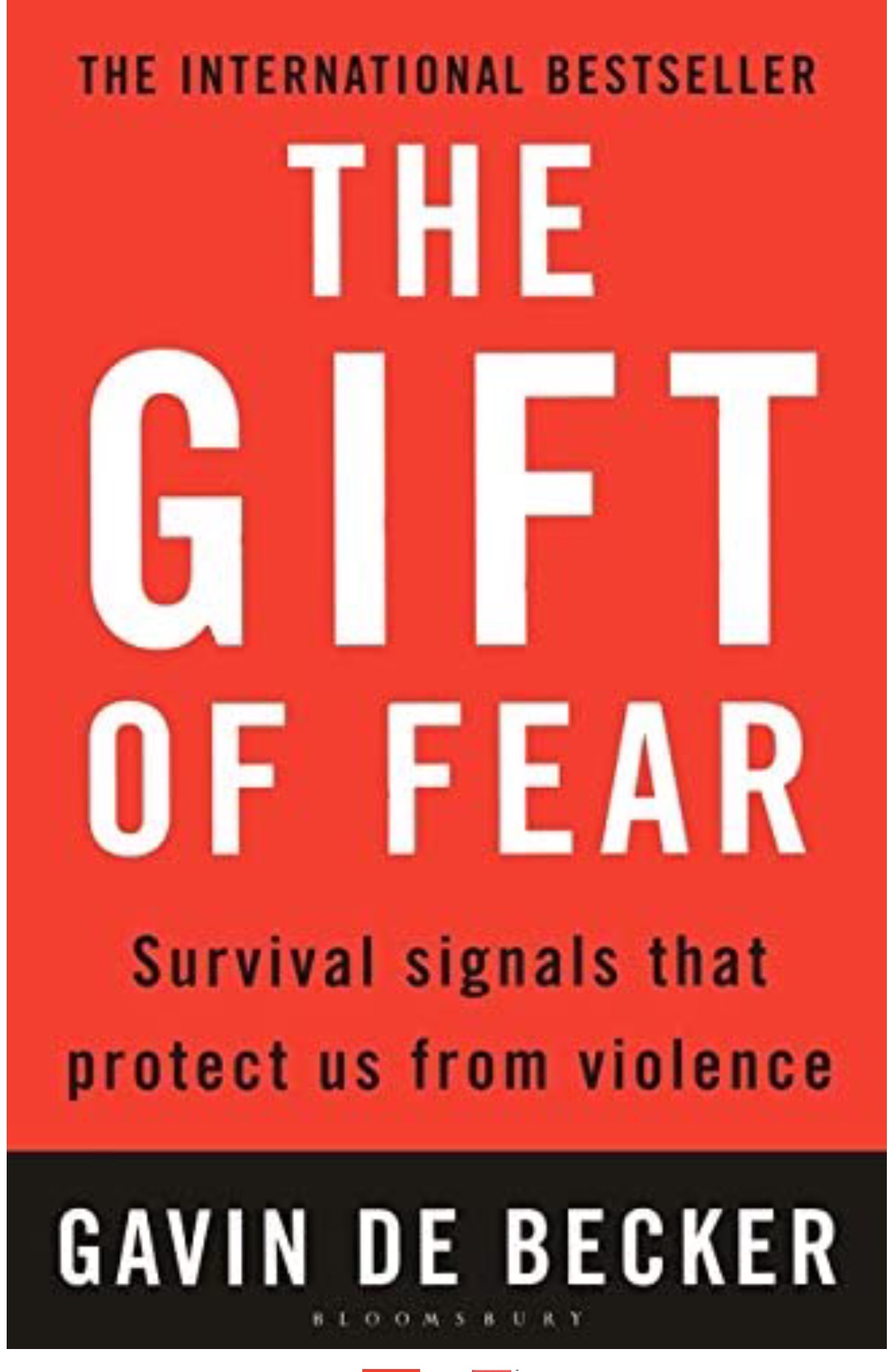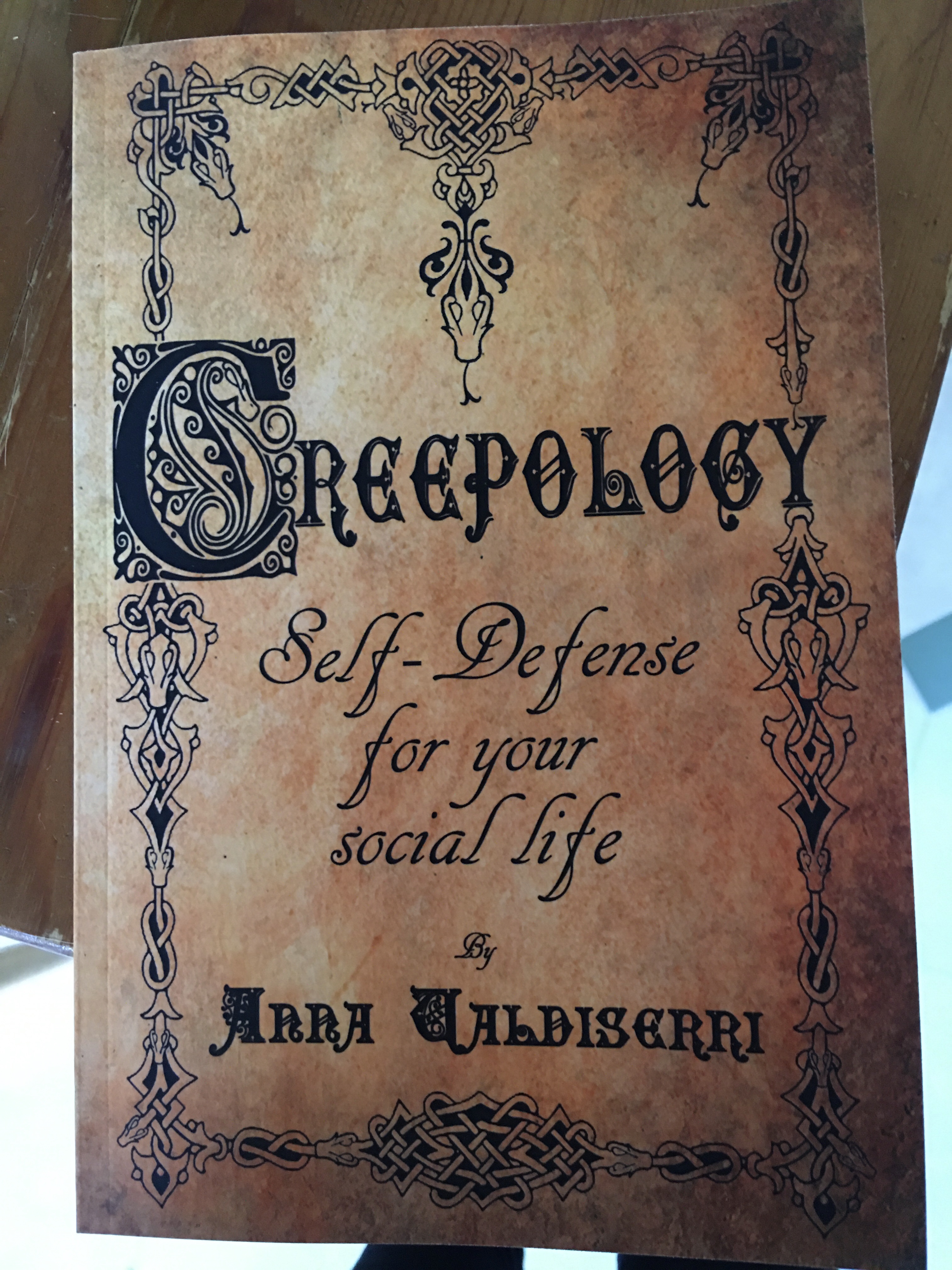Welcome back, readers. And a warm hello to anyone new to the project blog.
Traditionally the blog cranks into action just before a project visit. Sadly, with 2020’s pandemic still ongoing, I am not sure when we will be returning to Varanasi. It’s hard to believe it’s been 13 months since the last outreach visit but we have been working hard to maintain momentum.
In our last visit we began a specific self-protection strand to the work in Varanasi. This was born from two key objectives: one was to be clear about the goals of karate education for our girls at Disha, and one was to extend our work by offering functional short (1 or 2 day) interventions on self-protection habits for young women accessing education. I’ve said a lot about the benefits of karate for intrinsic confidence and empowered behaviours for women elsewhere in the blog. The results we have seen at Disha fully endorse this intrinsic model yet I also became aware that we had the potential to help many more young women and increase the impact of our work.
If you ask me what I do I’ll tell you: I teach karate and self-protection. I’m really specific about this because being a karate teacher doesn’t make anyone an expert in self-defence (or the far broader sphere of self-protection: the attitude, habits, and psychology of personal safety). It’s a common misconception that being a black belt equates to being able to educate other people on personal safety, and while there is certainly some shared territory in the two fields, I have become extremely energetic about articulating the similarities and differences.
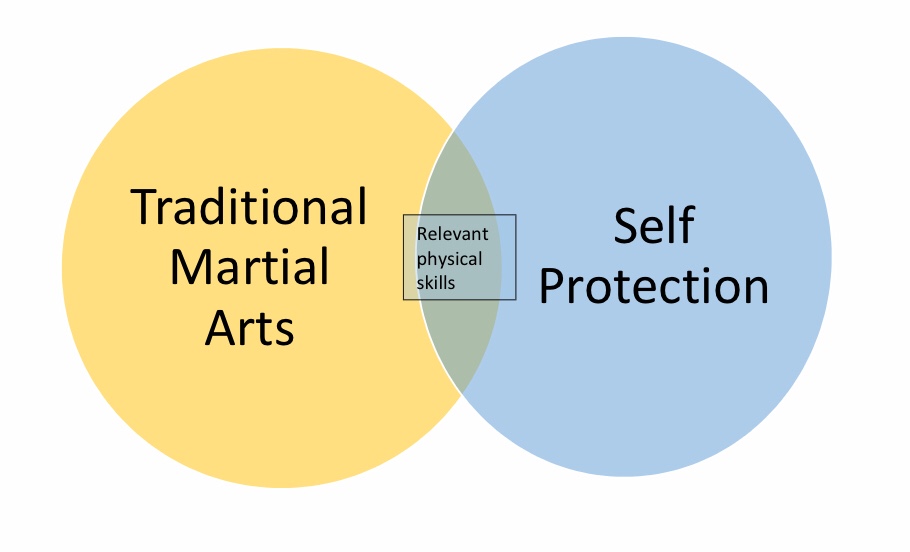
It’s wrong to conflate martial arts training with self-protection training. Technically wrong, practically wrong and morally wrong. You can fight me on this if you like https://youtu.be/VelfLu2WfmA but I’ve got some pretty convincing allies; I’ll add references at the end. For the sake of the length of the blog, I’ll continue as if we all agree for now.
I’d decided to research and develop a short self-protection seminar format which could work alongside our karate-based work in Varanasi. Clearly this is very different to the years of consistent karate training with the girls at Disha.

Yet learning soft skills (which make up over 90% of self-protection) could have a huge effect for many more girls experiencing harassment, abuse, and assault. I used to believe that a one-day workshop was worse than useless for self-defence as these were historically made up of a few gimmicky techniques, easily forgotten, creating a false sense of security. I know better now. A decent workshop based around legalities, psychology, and situational awareness can make a huge difference in terms of avoiding and managing potentially dangerous people and places.
It’s something of a cliché that the majority of self-defence teaching is based around scenarios that are statistically unlikely. It’s not the stranger in the bushes; it’s your ex, it’s your ‘friend’, it’s your trusted family member who presents the worst risk. It’s essential to be context-aware though and, in India, casual street attacks are much more common than they are here. Girls travelling to and from school, university or work are at a substantially higher risk of sexual assault. If a girl is being repeatedly harassed by someone she must encounter regularly, then there is little chance of her being taken seriously by police if she is in fear of attack, especially if she is poor and low caste.
Here’s a couple of recent examples in Uttar Pradesh where we are running our outreach. A 19 year old girl was gang raped by 4 higher caste men who had been threatening her for many months. They dragged her by her dupatta (neck scarf) strangling her and breaking her neck in the process. They cut her tongue and left her for dead. She gave evidence before she died, but police continued to delay their response. When she died, she was cremated without permission or knowledge of the family because there was already a lot of public anger about how the case had been handled. This was September 2020 https://en.wikipedia.org/wiki/2020_Hathras_gang_rape_and_murder
Under Indian law she cannot be named publicly because she did not give permission and it might shame her.
On October 30th a 20 year old named Gulnaz Khatoon was molested by a neighbour as she went to take out the rubbish from her home in Bihar (where several of our Disha girls are living during the pandemic).

This neighbour had been harassing her for months and her family had tried in vain to get him to leave her alone. She resisted the attack and so the neighbour, his brother, and his father poured kerosene over her and set her on fire. She was from a Muslim family, which adds even more emotion and complexity to the case. This case has not been widely reported here and the nature of the accusations made against the police mean that any link I post here could potentially give a distorted view. Again, she gave evidence before she died but her attackers had plenty of time to get away and at this stage have not been caught.
These may seem like extreme examples in a huge population. Unfortunately, I am just picking the most recent cases in the area of our project. A brief search will tell you that this level of violence is the realistic and constant.

Activist Swami Maliwali said: “Fear of rape is the permanent state of mind of women in this country; it’s conditioned into us from the moment we are born and it’s impossible to escape. I am constantly thinking about my safety, and you can say that for almost every woman in India. Imagine where India would be if that time could be put towards the progress of our country.”
https://www.theguardian.com/world/2019/dec/07/india-rapes-activist-hunger-strike-protest
I ran a pilot workshop last October for Sunbeam School – our first seminar for non-martial artists. This was for 16-17 year olds, and focused on attitude, awareness, verbal de-escalation and pre-emptive striking.
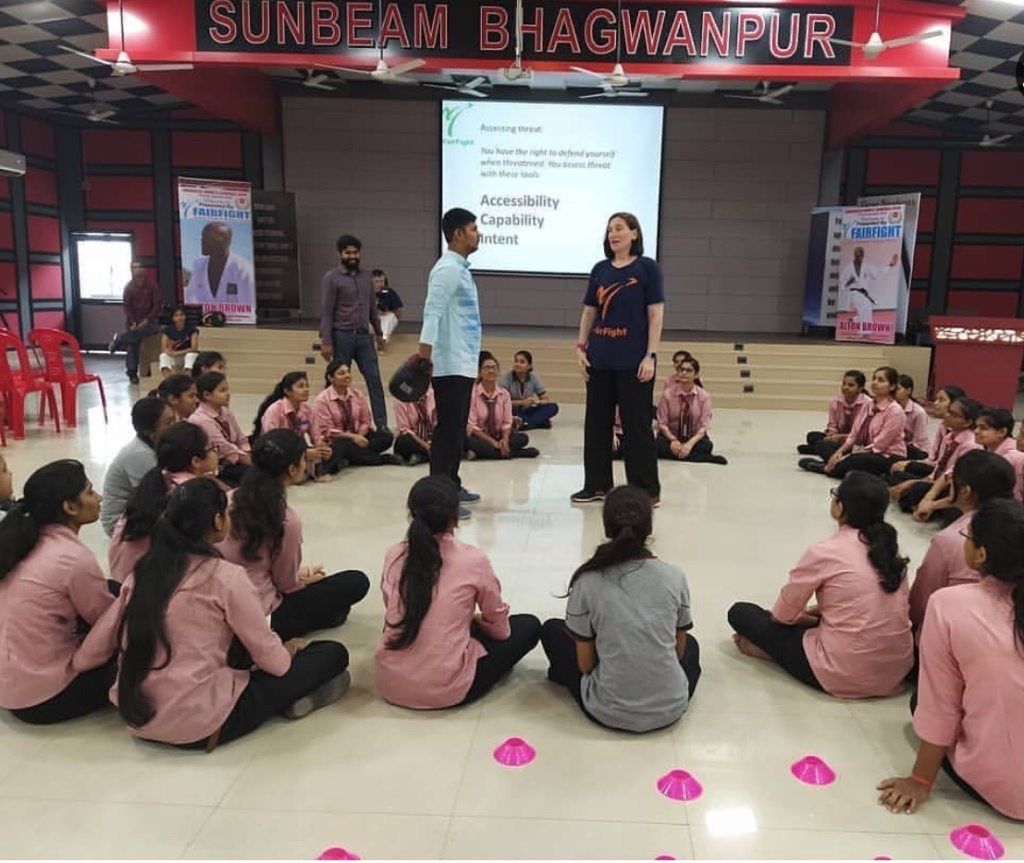
The pre-Covid plan was to extend this in the April visit – working with the students at Project Mala School in Guria. This should now take place next year but meanwhile we have partnered with another NGO in the region so that, despite the pandemic, we can continue to push forward with our mission. This organisation is the Red Brigade Trust http://redbrigadetrust.org/
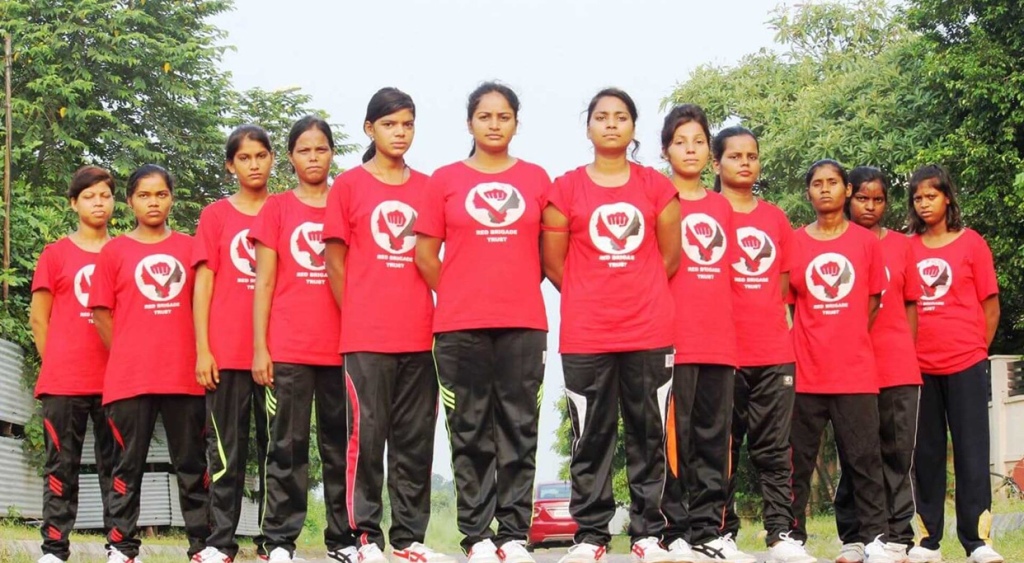
I had followed their work on social media for several months; the combination of practical interventions and social justice pressure and education showed the same ethos and goals of FairFight. I made contact with one of their instructors in August to discuss the potential for collaboration. We had a meeting over Zoom where I learned a lot about their impressive work in poor communities and as advocates for victims of rape and acid attacks. They have benefitted from excellent advice and training from instructors visiting from other countries in the past. A collaboration with us could provide support and ongoing professional development for their young female instructor team whose enthusiasm and commitment are unimpeachable but whose training and skills in self-protection were more limited. And so, a new partnership was born.
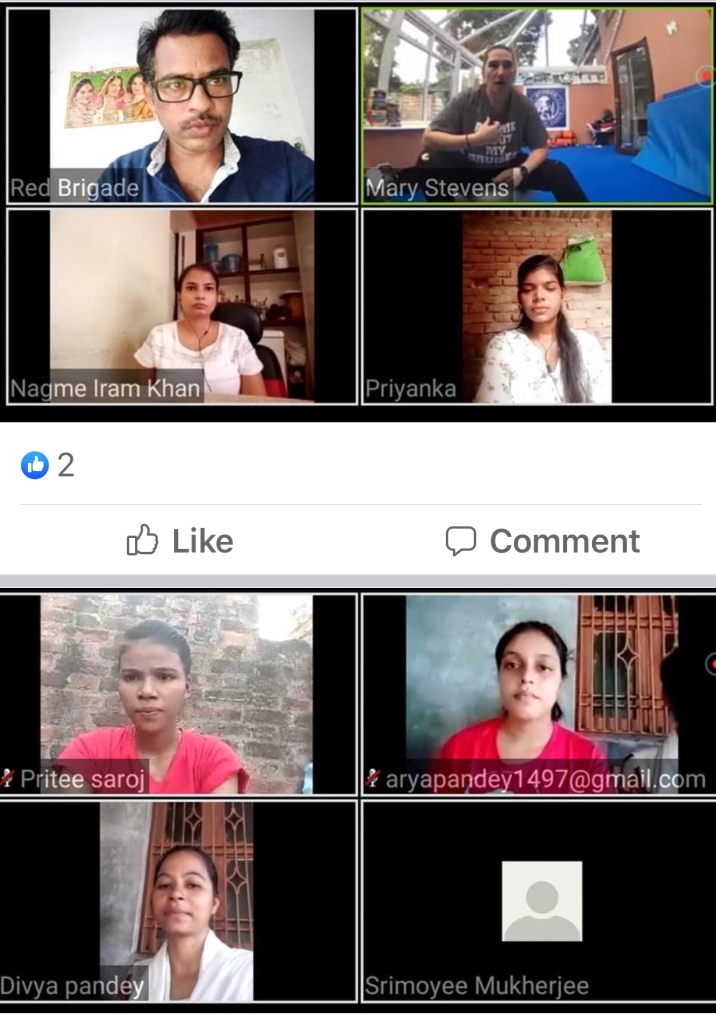
It’s challenging! We train every week over Zoom. This is led at the Uttar Pradesh end by Priyanka Bharti. She doesn’t speak a lot of English so we also have Moyee on the Zoom (from our local FairFight logistics team). Internet connections can be awful. Through cramped spaces and mobile phone cameras; through power cuts, time zone differences and language barriers we have now been training together for three months and made fantastic progress.

Sometimes we work on theory; sometimes on practical drills. Priyanka and her colleagues regularly train hundreds of women in their courses for the Red Brigade, so I try to provide material which will be effective for them to pass on, whilst supporting their development in the broader aspects of self-defence and self-protection.

The substance of the material has been constructed in consultation with Jamie Clubb (www.clubbchimera.com). Jamie has been brilliant in helping me select and adapt material relevant to non-martial artists. His extensive work in the psychology and practice of anti-bullying is well known (see resources at the end) and he’s been very enthusiastic about considering the social and cultural differences of the context to tailor effective sessions. I’m lucky that he’s not far away from me here in the UK so we train weekly to test and review content for this as well as for my own students.
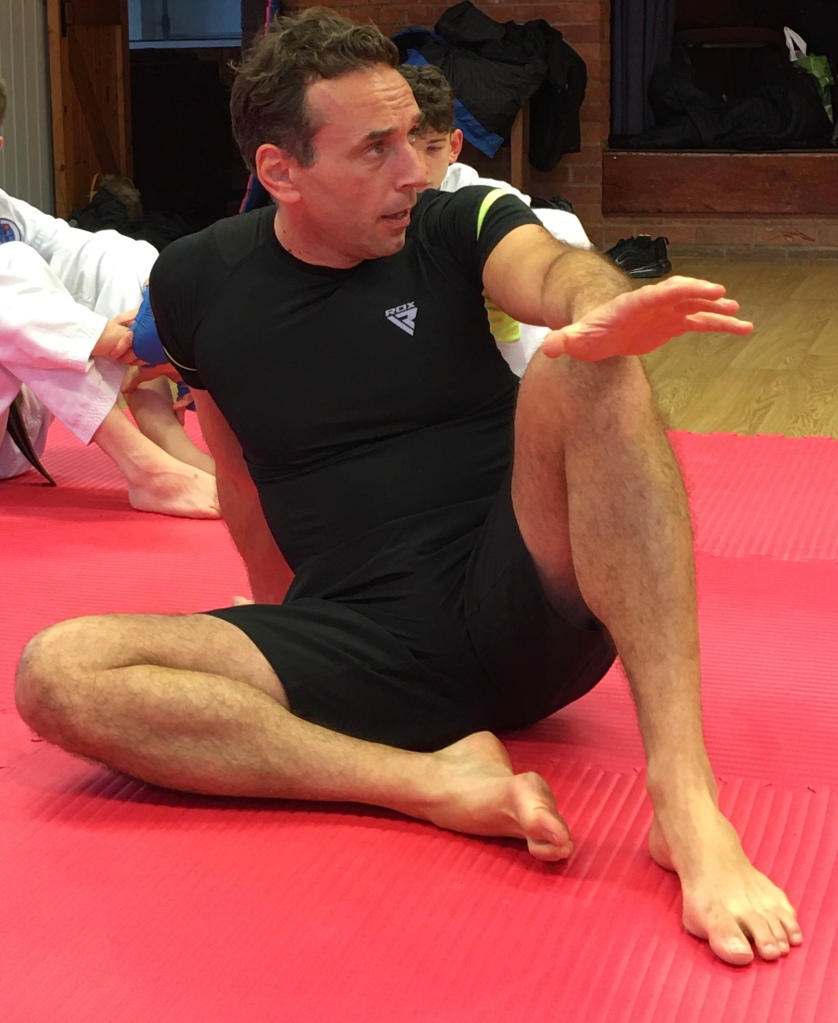
Despite seeing great engagement and progress, I began to realise the project needed a more sustainable structure. Back in the lockdown I led a self-protection webinar for some women in Nepal – it was focused on soft skills and the participants came up with a range of relevant and thoughtful developmental questions at the end. The question that stayed with me was the one I couldn’t help with: the issue of domestic violence. In a system which doesn’t condone or support women leaving abusive relationships there’s some mitigation and de-escalation strategies which can be part of the discussion…sure. There are some resources. But there are no easy answers; the feeling of helplessness is strong and haunting.
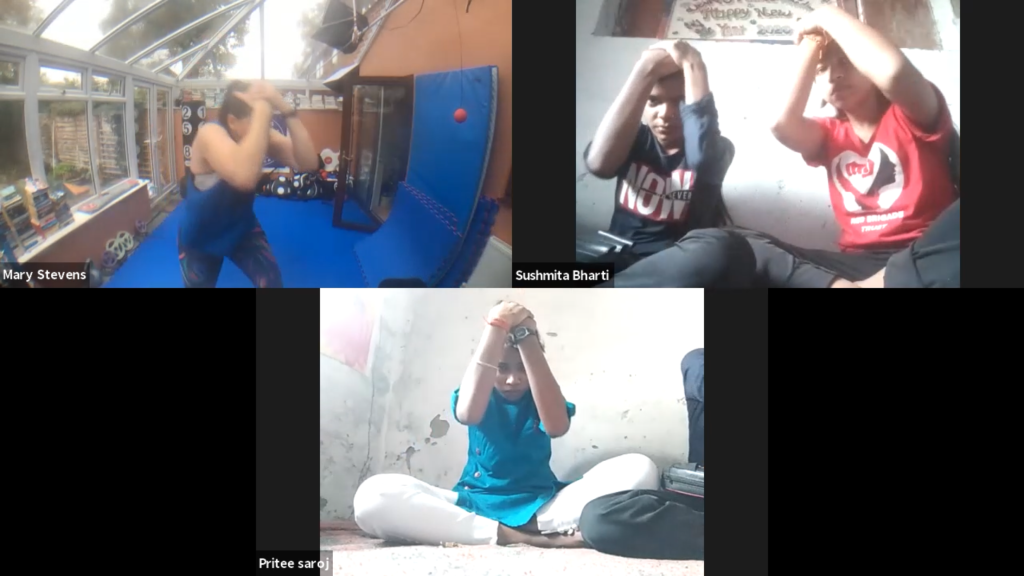
The young women on the front line in the Red Brigade experience this to a far greater degree. They know the work they are doing is incredible and valuable yet they carry the stories of unhappy arranged marriages, brutal rapes kept secret because of family shame, women suffering death threats for seeking justice … no one can continue to absorb the trauma of others without suffering secondary trauma.
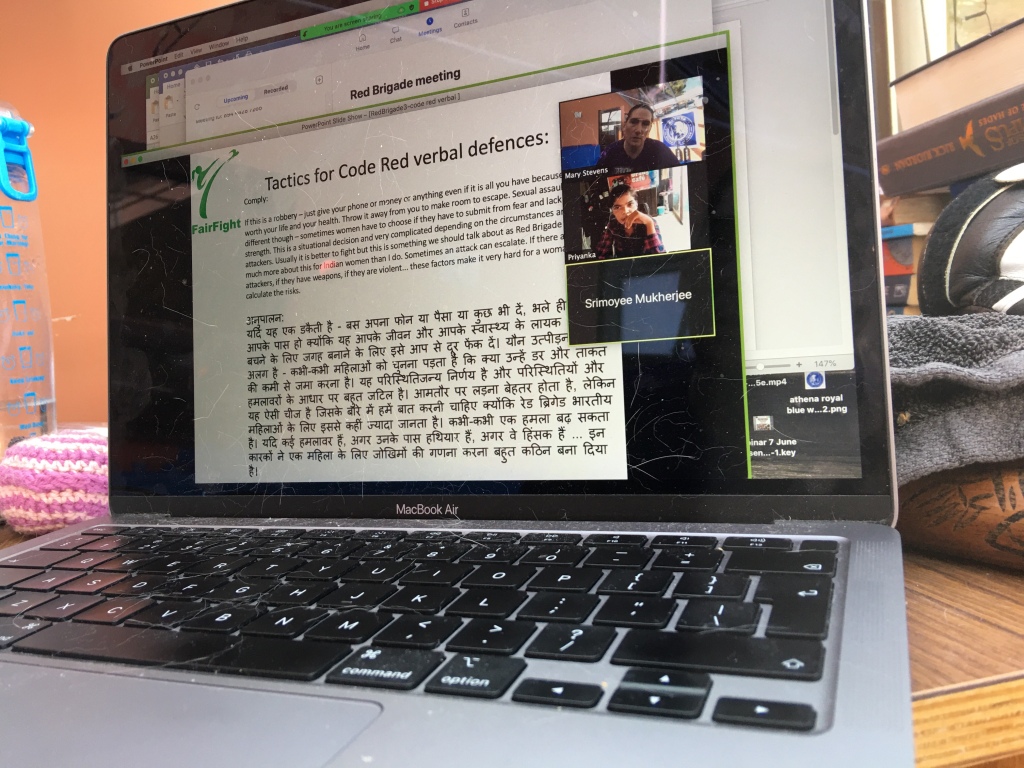
As part of my relentless quest to learn more about this, I came across the work of Pamela Armitage (studyofviolence.com) who, with Richard Dimitri, is a pioneer in the field of trauma-informed self-defence teaching. I approached her to ask if she would be willing to mentor and support our work. She has been a fantastic collaborator with a sensitive understanding of the subject matter and I’m so grateful to her and to Richard for their generous sharing of resources and advice. We’re working on extending trauma-informed practice across FairFight’s work to support the wellbeing of instructors and students.
So. This brings you, the loyal reader, up-to-date with FairFight India’s status. I will update this blog again when we have a clearer plan for 2021. We will be heading out to assess the projects just as soon as travel is permitted – I’m guessing this will be post-vaccine. Meanwhile, I’ll leave you with this beautiful picture of Rishika and Susmita practising their karate by the Ganges during lockdown.
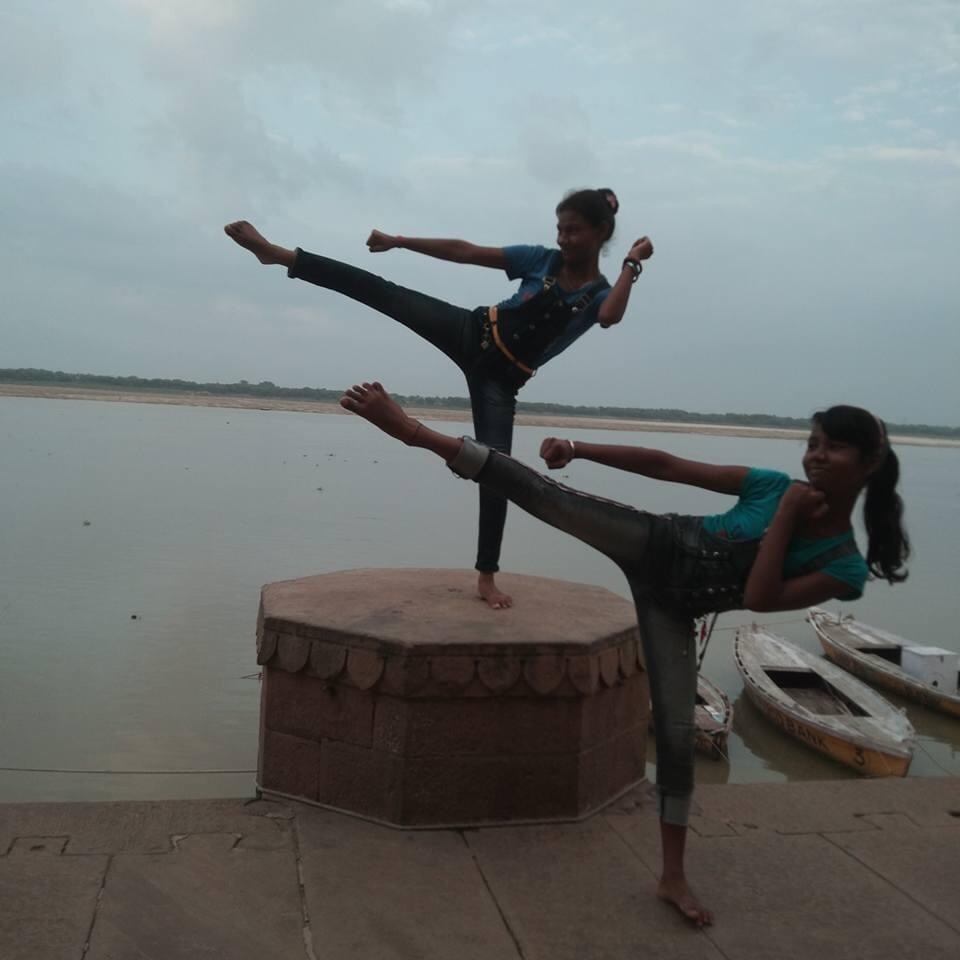
PS As project coordinator I am recruiting for the team. Firstly if you write Hindi and would like to help me with collaborating on correcting resources created using Google Translate, then please get in touch! (mary@athenakarate.com).
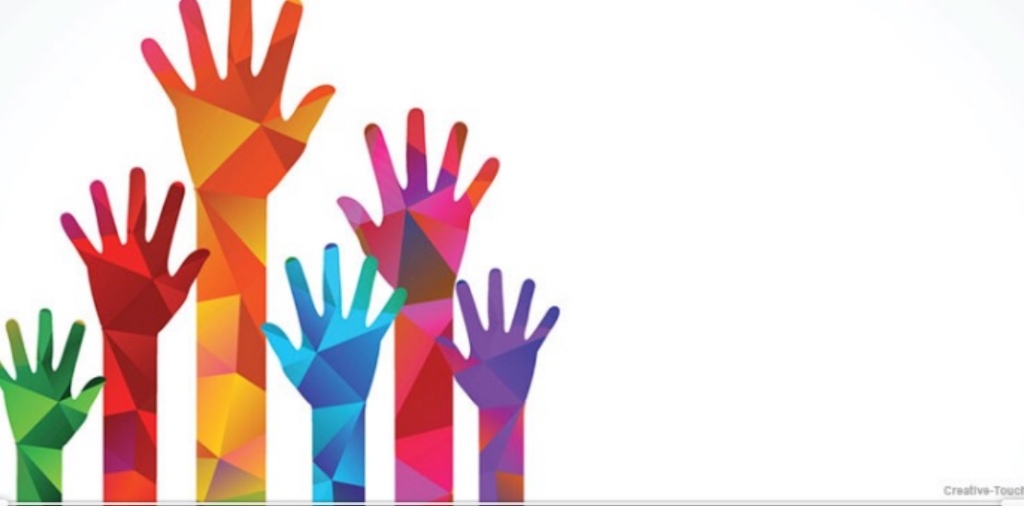
And if you have martial arts or self-protection skills, a passion for the mission and a desire to learn about how an NGO operates in India then please talk to me about coming on a project visit to learn more.
PPS Here are (just a few!) of the recommended resources in the area of ‘whymartialartsisntthesameasselfdefence’ or ‘reallycoolstuffIrecommendifyouwanttoknowmore’
National Federation of Personal Safety UK – great professional development for those who seek qualifications in self defence training.
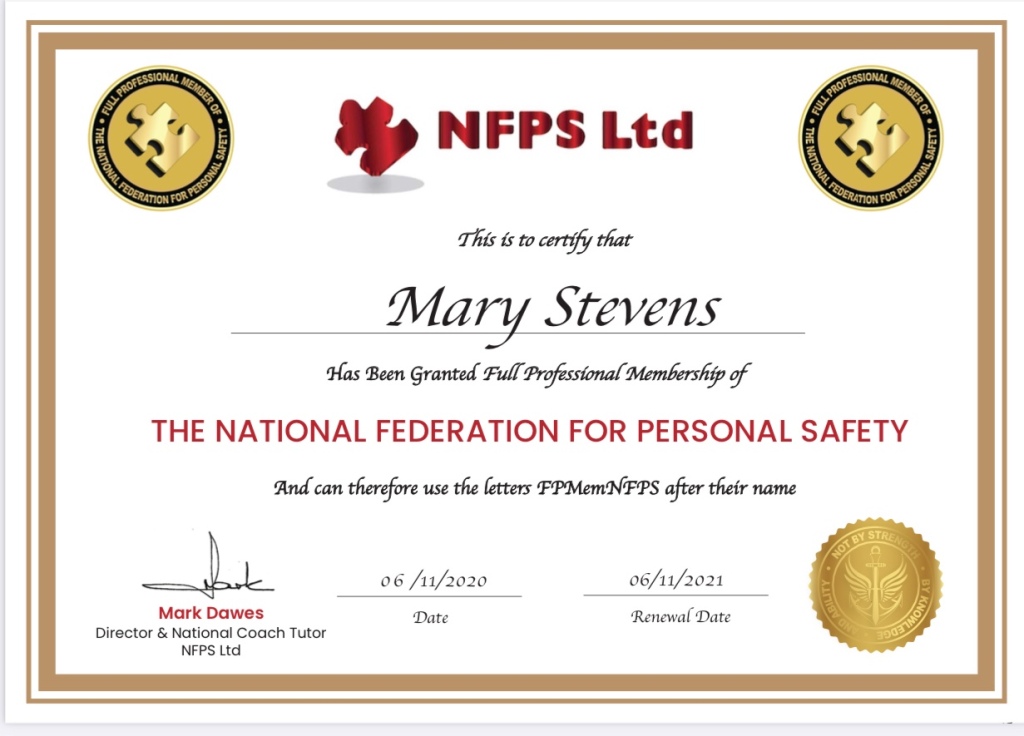
For anyone interested in the lively debates around self defence and martial arts please check out the inimitable Randy King at RandyKingLive.com

I owe this pod a huge debt for its energetic, fun, and critical wrestling with key issues. Randy’s guests all have something valuable to say but I’m going to link the brilliant Kaja Sadowski’s debate on whether or not you can teach self defence in a day. Check it out! https://podcasts.apple.com/us/podcast/devils-advocate-4sd-podcast-ep-033-can-self-defense/id1470579489?i=1000466082792
Australia is lucky to have Joe Saunders but we all get to share him through the Managing Violence podcast.
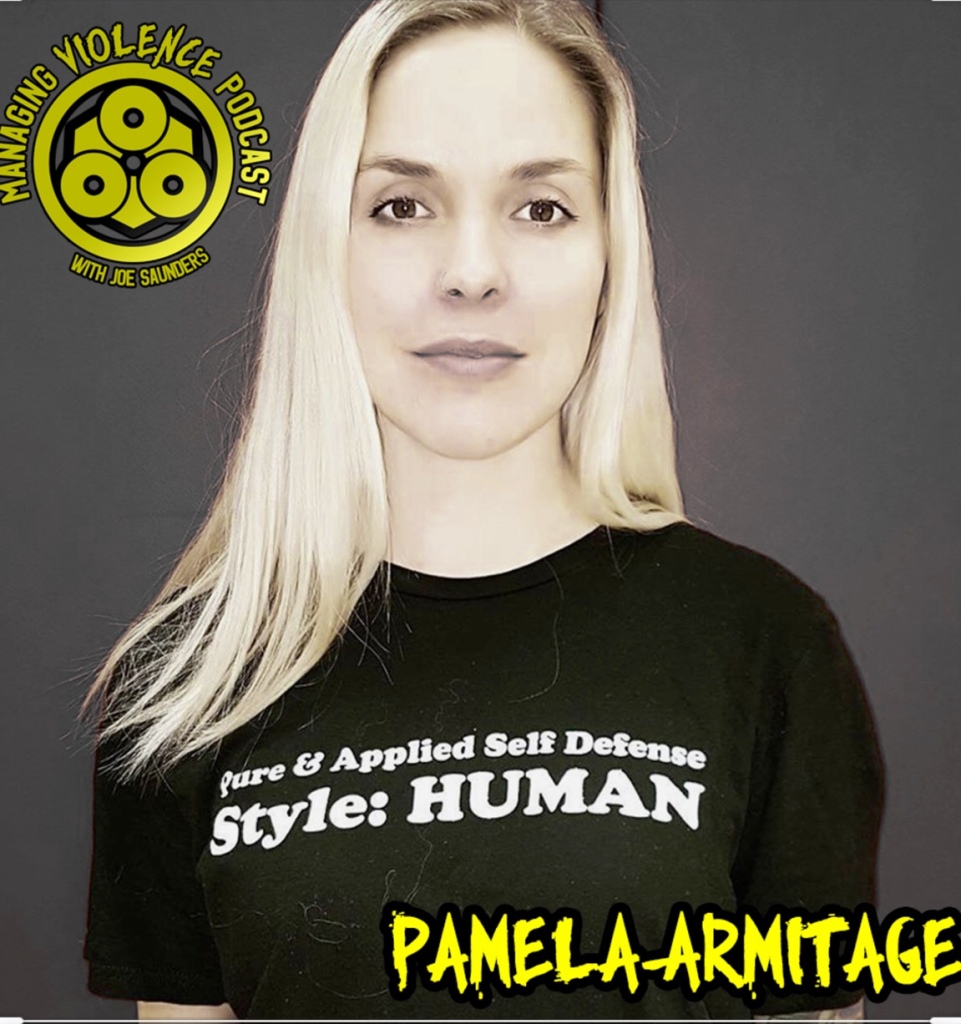
A stunning star-studded menu of guests to choose from but I’m going to link Pam Armitage’s interview as that was a very important interview for my own work. https://www.violencepod.com/guests/pamela-armitage/
Every single session I’ve done with Jamie Clubb is blogged at clubbchimera.com and Jamie also teaches online if you are interested in his stuff.
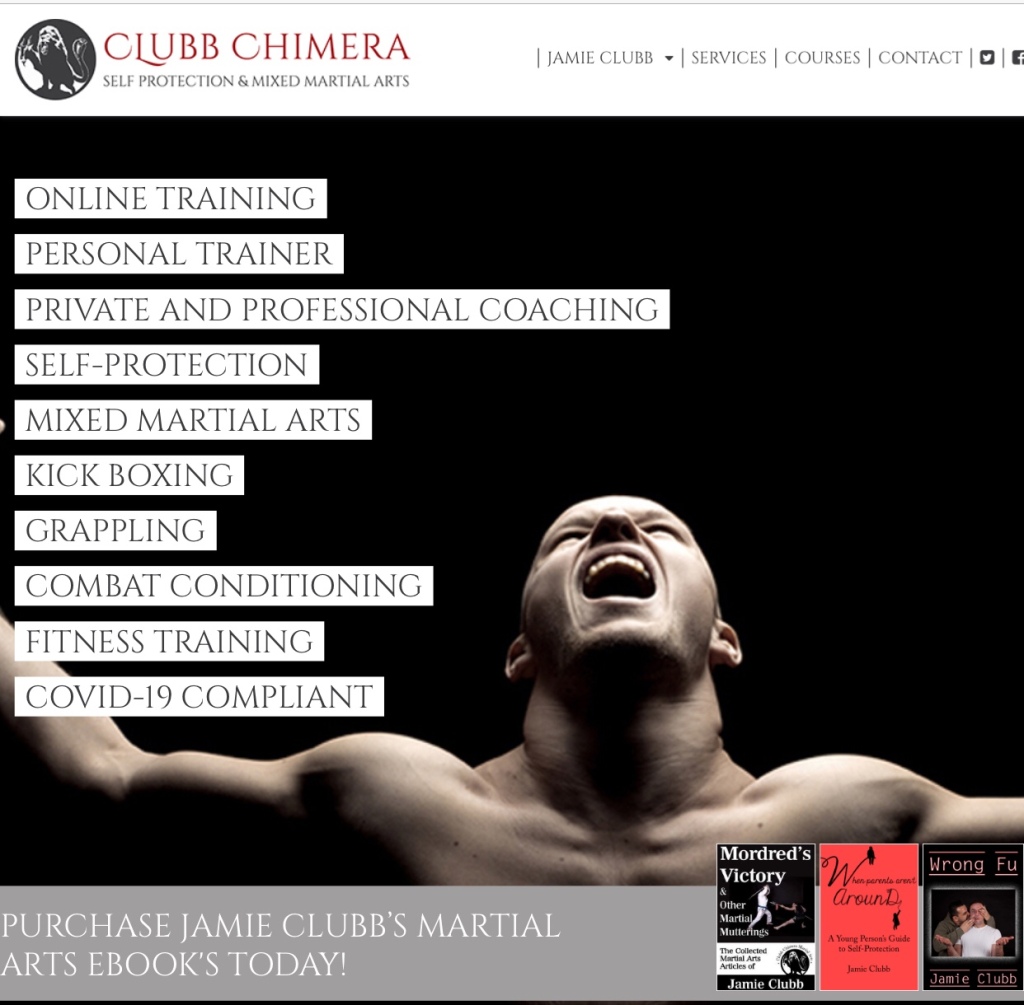
His podcast takes an unusual view of the key issues – using literature and mythology to examine personal safety: I’ll link the dark triad pod here – known as the Prince Charming Offensive. https://www.youtube.com/watch?v=PAkSrm6GHmE
Studyofviolence.com is the free resource created by Richard Dimitri and Pamela Armitage designed to make their work accessible for everyone. Converting this into Hindi is one of my goals. It might take a village – do you know anyone who can help?
PPPS A miserly few recommended books. I may have to stop buying self defence books soon when I run out of house.
PPPPS Correspondence with Iain Abernethy: Here’s part of an email Iain wrote to me recently as part of an ongoing discussion about the value of separating the goals of karate teaching from those of self protection:
Hi Mary,
Thanks for the email. I am of course happy to help in anyway I can.
It’s quite common for martial artists – of all kinds – to conflate martial arts with self-protection. It’s a major problem because when that happens it leads to self-protection being badly taught, and the wider benefits of martial arts training falling out of focus.
Self-Protection is the knowledge and skills everyday people need to reduce their risk of harm from criminal activity. This should see the emphasis placed on personal security and will include many things which are not addressed in martial arts training i.e. a study criminal behaviour, crime statistics, awareness training, personal security, home security, security while traveling, verbal de-escalation, domestic violence, dysfunctional relationships, law, etc.
It is possible to teach self-protection without ever addressing any physical methods of last resort (for example, when teaching the elderly). We also need to keep in mind that most people who want to study self-protection are not “martial arts enthusiasts”. They will commit several hours to learn a life-skill, but they are not going to commit decades to learning high level martial arts skills.
If we teach martial arts as self-protection, then we are teaching the wrong things to the wrong people. This is obviously a waste of everyone’s time, but more importantly it puts people at risk. Martial arts training will not give people the personal security skills that could keep them safe. It is VERY important to keep the distinction between martial arts and self-protection clear.
As someone who has studied karate since I was a child, I know that it has given me a high level of skill when it comes to the methods of last resort. Karate has also imparted solid fighting skills (consensual duels with symmetrical goals) and has been great for my mental and physical health. However, my decades in karate have taught me almost NOTHING about true self-protection. I don’t see that as being a slight on karate, it’s simply because karate does not address the non-physical things which form the core elements of self-protection. Like yourself, I have studied self-protection separately. I also think it is vitally important to teach them separately too. There’s obviously crossover when it comes to the physical methods of last resort, but overall there are many more differences than similarities. They are not the same; not even close.
I recently made a couple of related videos on this very issue which may be of interest.
Five things martial artists get wrong about self-defence: https://youtu.be/m7fJ9ZlzWfQ
1) Using self-protection is the ONLY valid measure of value
2) Reinventing criminal violence in their own image
3) A failure to address legalities
4) A failure to grasp the objective of self-protection
5) Reducing the whole of self-protection to nothing but the physical
Four key differences between martial arts and self-protection: https://youtu.be/LzUOntsYWRI
1) Different Goals
2) Different Enemy
3) Different Students
4) Different Instructors
Karate is a wonderful martial art. I genuinely can’t think of anything that has enhanced my life more. It’s something I am very passionate about and am forever indebted to. Karate is life-enhancing in a way self-protection is not. When we compare karate and self-protection, it should not be a better / worse value judgement, but a simple matter of ensuring we teach the appropriate skills to the appropriate student.
The trouble is that “would not work in the street” has become something of mantra for keyboard combatants and martial arts trolls. When we say karate is not self-protection, we are NOT questioning the combative efficacy of karate! Sadly, some think we are, and therefore it’s always important to make clear karate is not being called into question. Karate is an amazing and holistic martial art … BUT no martial art is self-protection. They are not the same thing.
